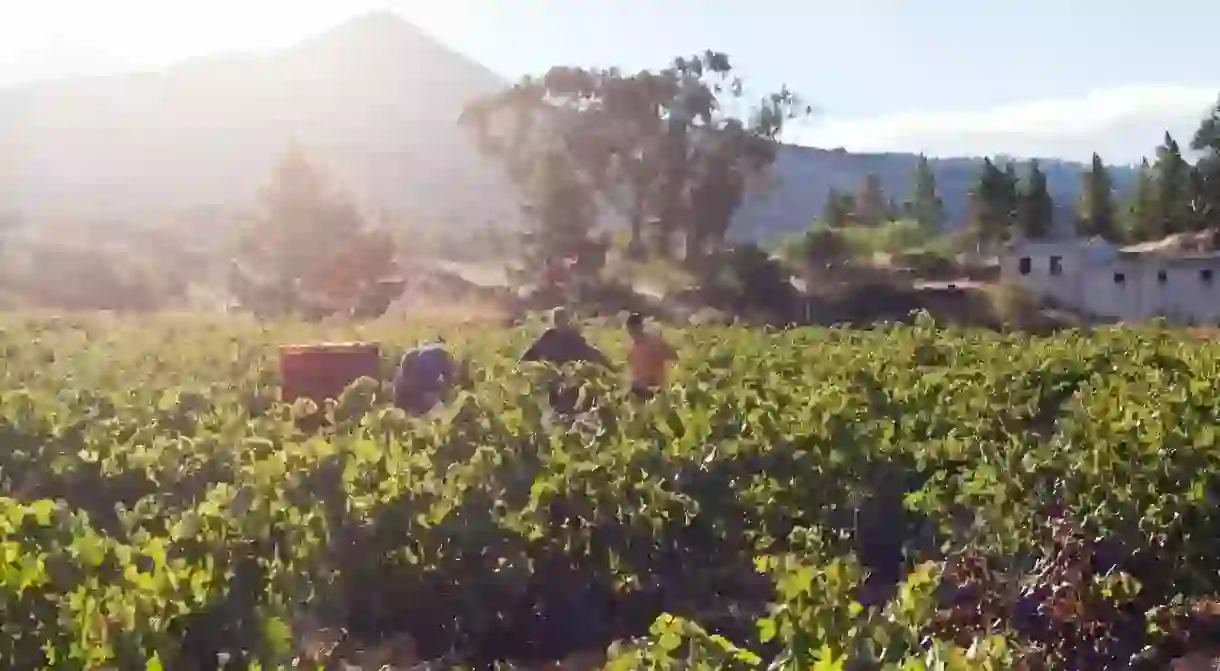Culture and Cuisine in Tenerife: the Ultimate Island Escape

This Canary Island has it all: a deep mountainous interior, a swathe of golden sand and a temperate year-round climate. And beyond its diverse landscapes, Tenerife offers a range of cultural attractions to satisfy every traveller. From a resilient town that’s rebuilt itself around art to culinary classes uncovering the secrets of mojo sauce, here are the best ways to sample culture and cuisine on Tenerife.
Throw shapes at a fiesta
The Tenerife calendar is filled with fiestas; each barrio (neighbourhood) hosting their own celebration of Tinerfeño culture. Los Realejos in the north holds more than 80 fiestas a year, and the busiest party months across the island are between May and September with more than 60 in each. The largest of all is the vibrant Carnival of Santa Cruz – considered the second-most popular in the world after the one in Rio de Janeiro – lasting for several weeks every February. Visit outside this time, or head into some of the smaller towns, for a more concentrated and calmer experience.

Get learning at the History and Anthropology Museum
Much of Tenerife’s culture stems from San Cristóbal de la Laguna in the northeast – it was one of the first cities founded on the Canary Islands and remains a historic centre and Unesco World Heritage site. The island’s past is often overlooked for the beaches and beautiful walking trails, but the History and Anthropology Museum, in San Cristóbal de la Laguna, provides a deep dive into island culture through exhibitions and a programme of activities.

Lap up culture in La Orotava
The northern town of La Orotava lies close to Teide National Park; valley scenery and Mount Teide rise behind the town. Its stately architecture gives an insight into the area’s grand heritage, but the cobbled streets aren’t particularly well-known to tourists. Casa de los Balcones, the gardens of Hijuela del Botánico, the Church of La Concepción and a trail of gofio mills are itinerary essentials here. There are guided tours available – don’t miss a museum visit or tastings of the local food.

Get arty in Garachico
This coastal town has faced several disasters through the years – it’s been hit by an epidemic and floods, and a major volcanic eruption destroyed most of the town in 1706. Today, however, flourishing Garachico has won awards for its artistic treasures and fine arts, and is known for its Saturday street market where local artists sell unique pieces. There’s also a contemporary art museum and the palace of the Marquis of Adeje displaying more of the town’s artistic side. Beyond the creative scene, there are natural swimming pools on the rocky promenade that are well worth a visit.

Know your mojo sauces
The unofficial sauce of the Canary Islands, mojo is used on many dishes, from papas arrugadas (wrinkled potatoes) to meat and seafood, and can be found in almost every restaurant and tapas bar. Each mojo has a base of olive oil, pepper, vinegar and garlic, with the two most popular being mojo verde (with coriander and parsley) and mojo picon (with chilli). If you want to recreate your favourite when you return home, join one of the various workshops on the island to learn how to make the traditional sauce for yourself.

Indulge in artisanal goat’s cheese
With an abundance of goats roaming the land, it’s not surprising that fresh goat’s cheese (typically just a few days old) is the best-loved dairy product on the island. The cheese is often cured and smoked in the remote Anaga region, but you can order it from most restaurants and grocery stores. There are incredible varieties, including queso a la plancha (grilled with honey) and almogrote (spread with tomato, garlic and olive oil). The Santa Cruz Food Market is a great place to pick up local foods including cheese, honey and gofio (Canarian flour).

Explore the five wine regions
Blessed with year-round good weather, Tenerife is an ideal spot for growing grapes – five wine regions flourish here as a result. The volcanic earth introduces a unique taste; most wines produced here have an intense, fruity aroma. There are hundreds of wineries across the island – most offer guided tours and tastings that provide an insight into the nuances of Tinerfeño wine production. In the north, the landscape is ideal for growing grapes and vineyards thrive on mountainsides well above sea level.

Learn more about this underrated Spanish island and plan your own adventure at spain.info













